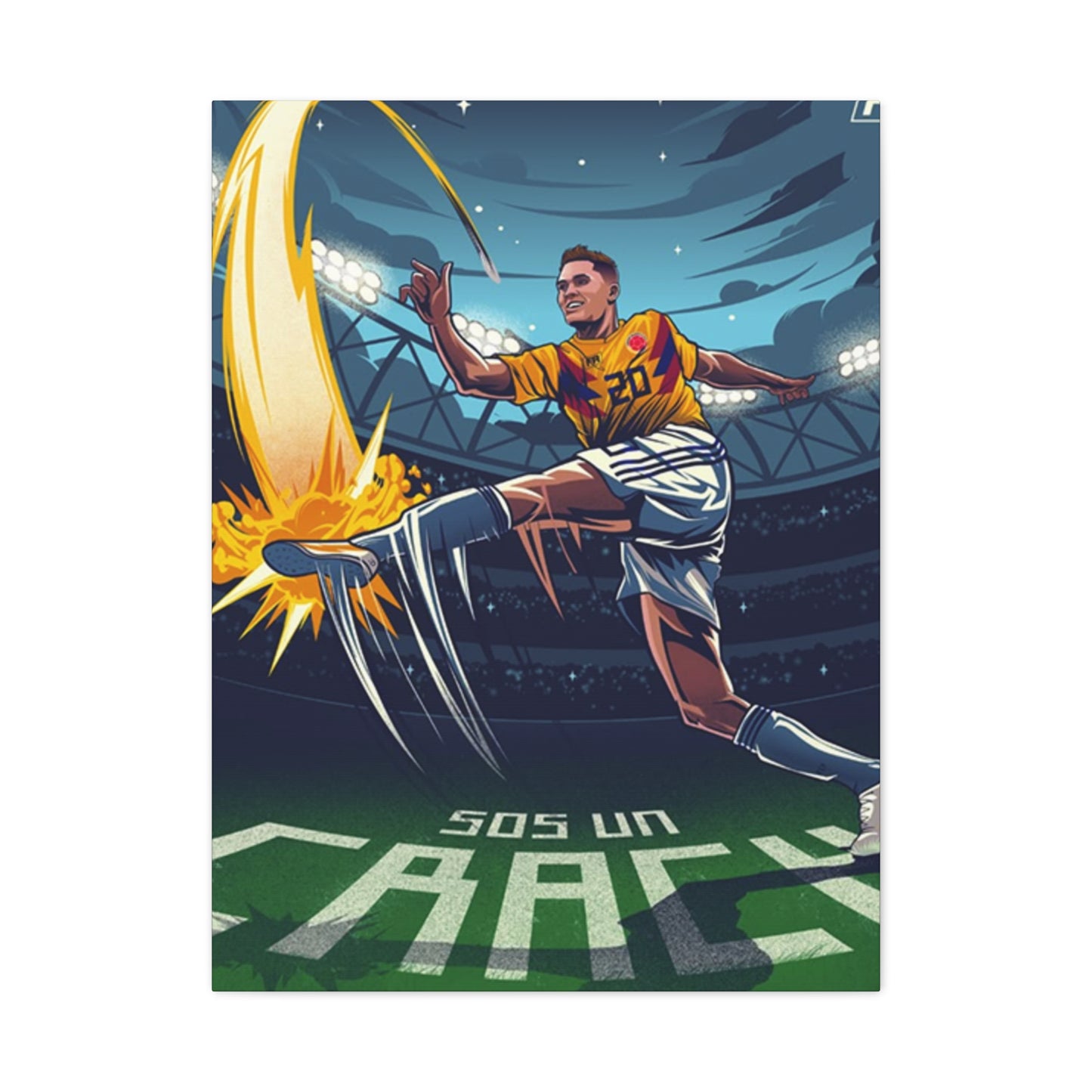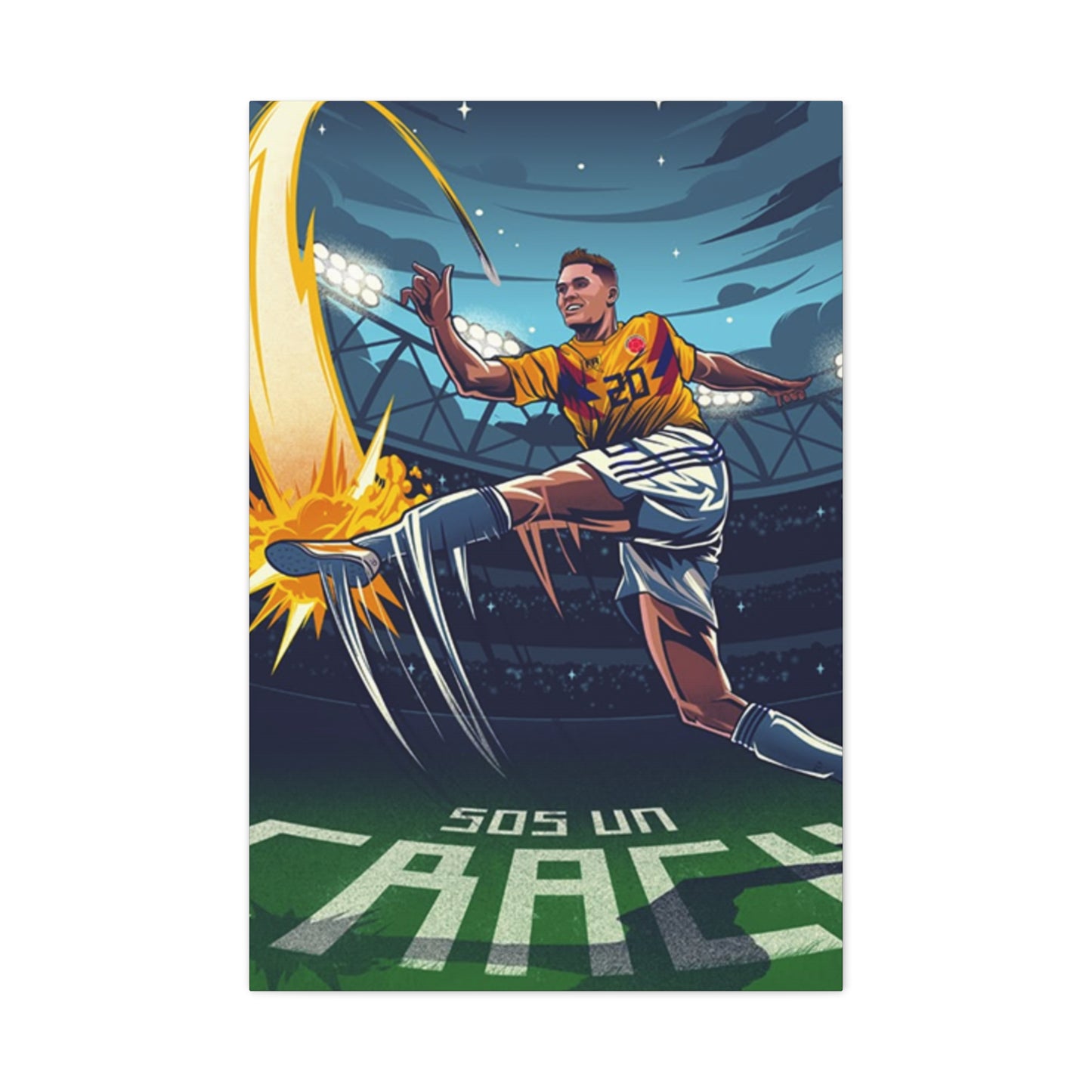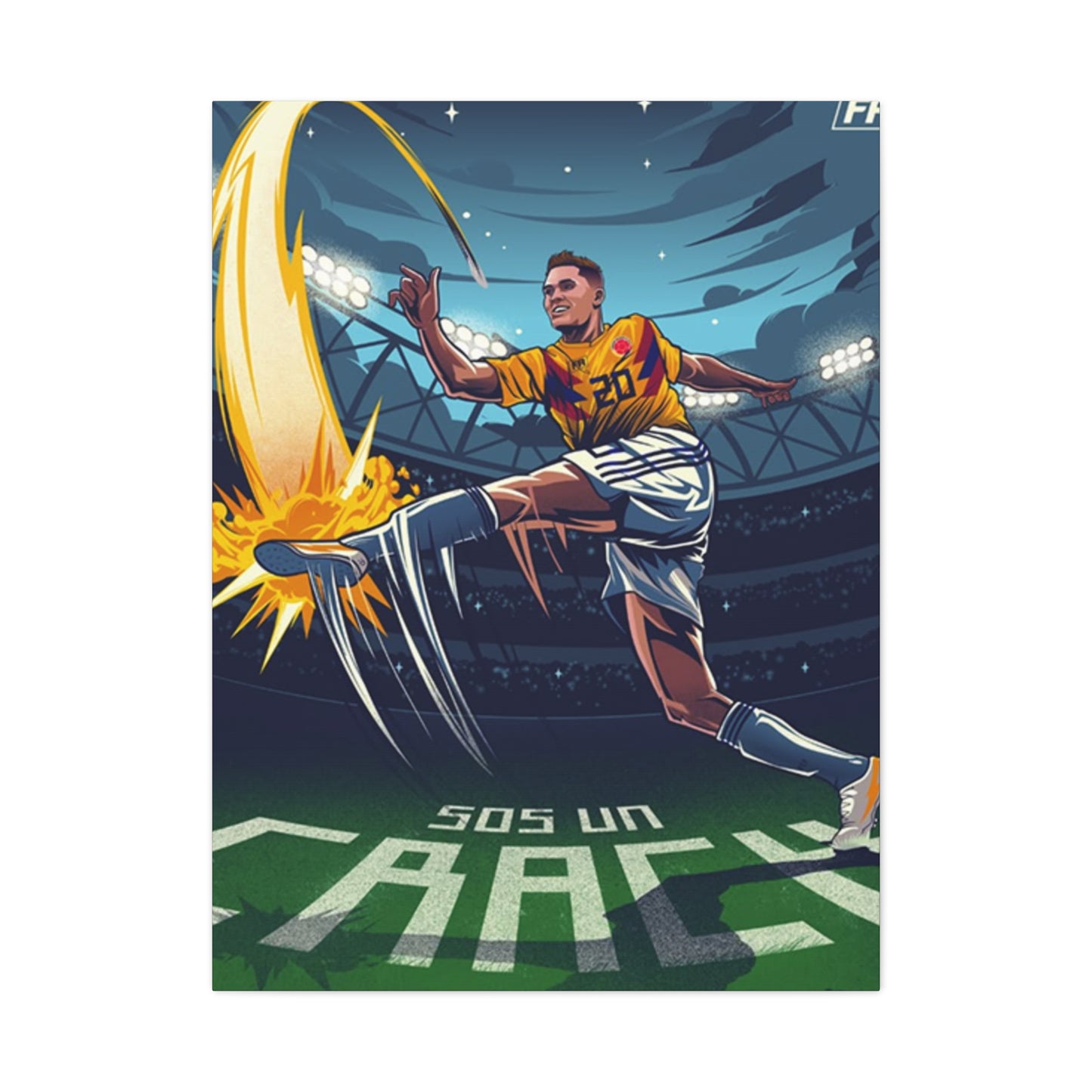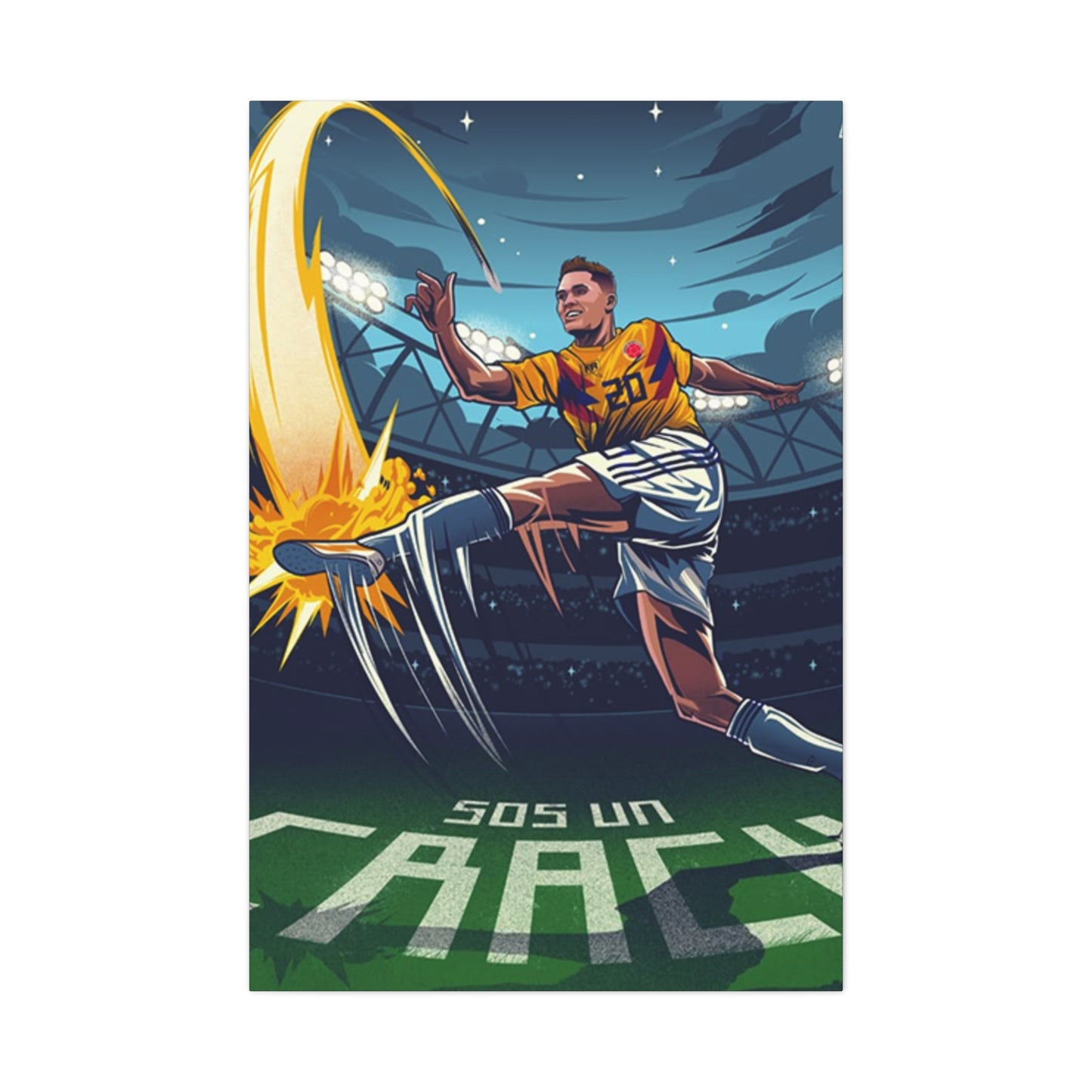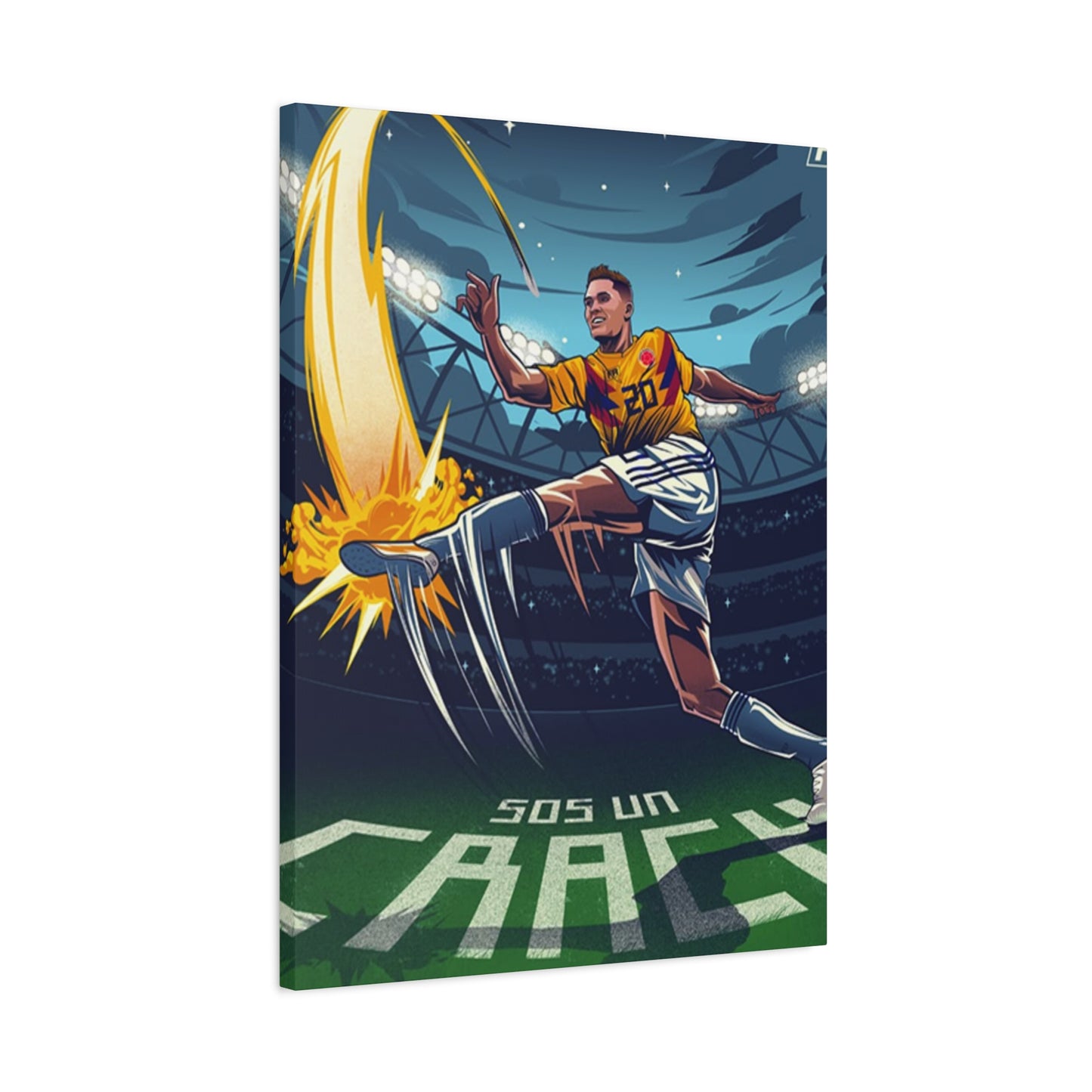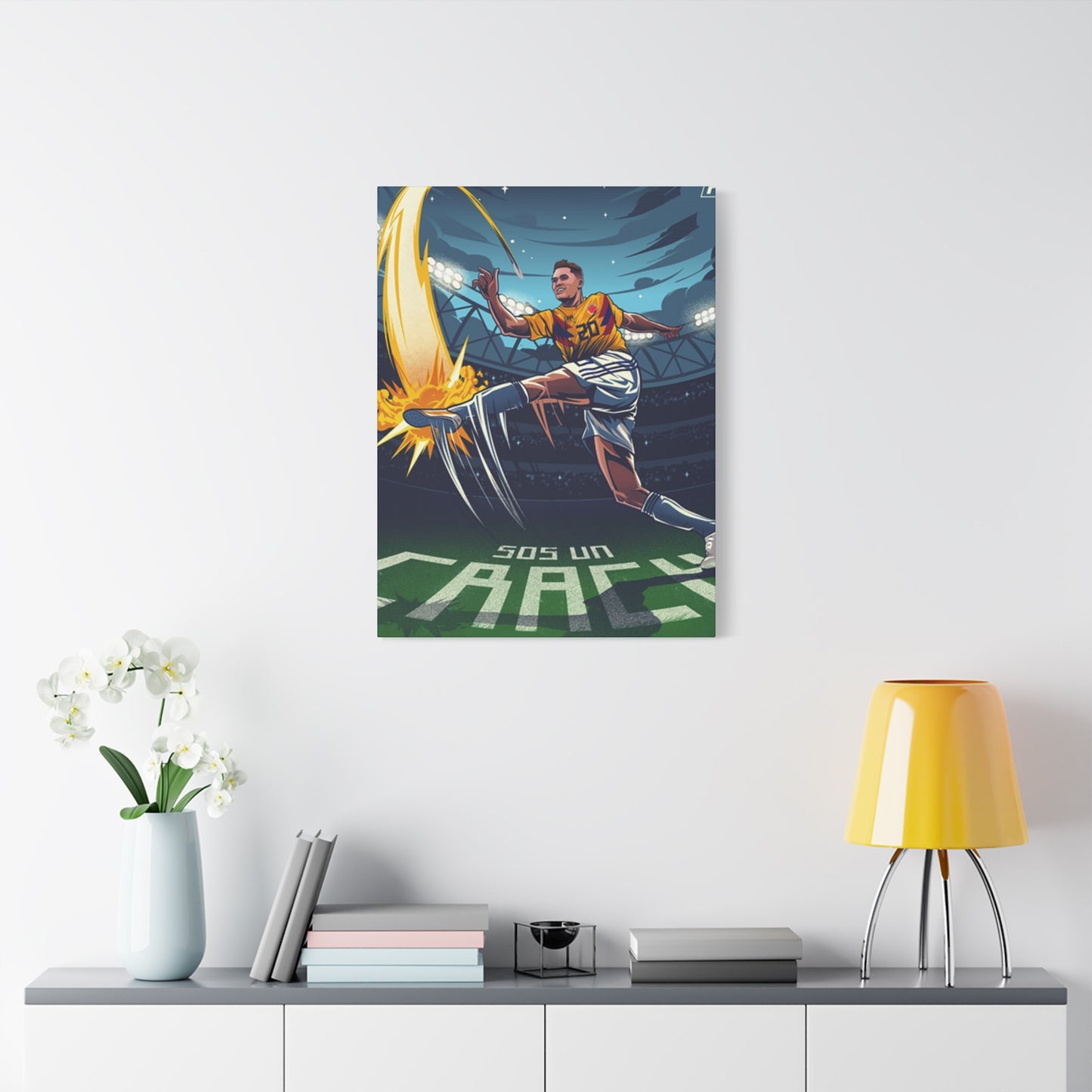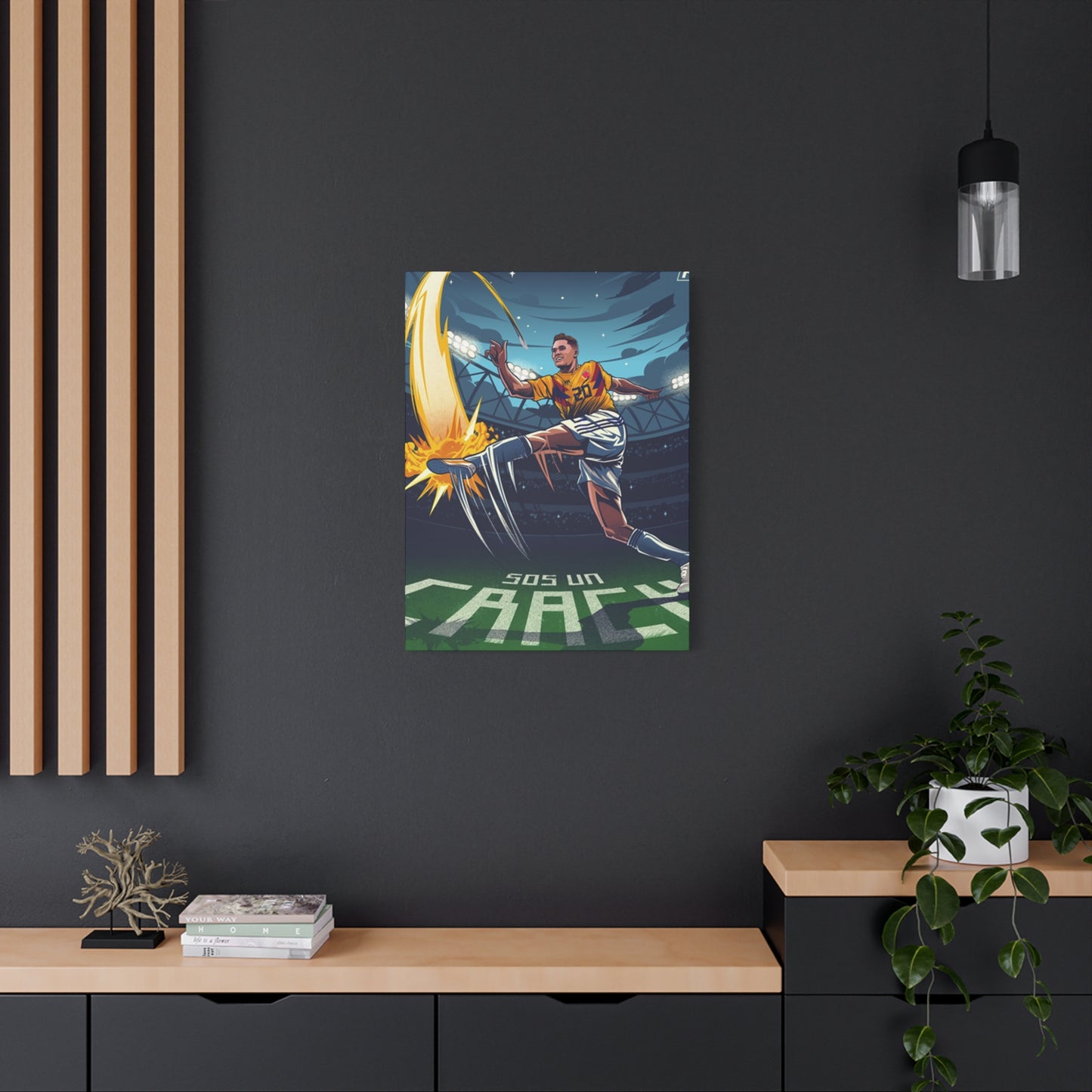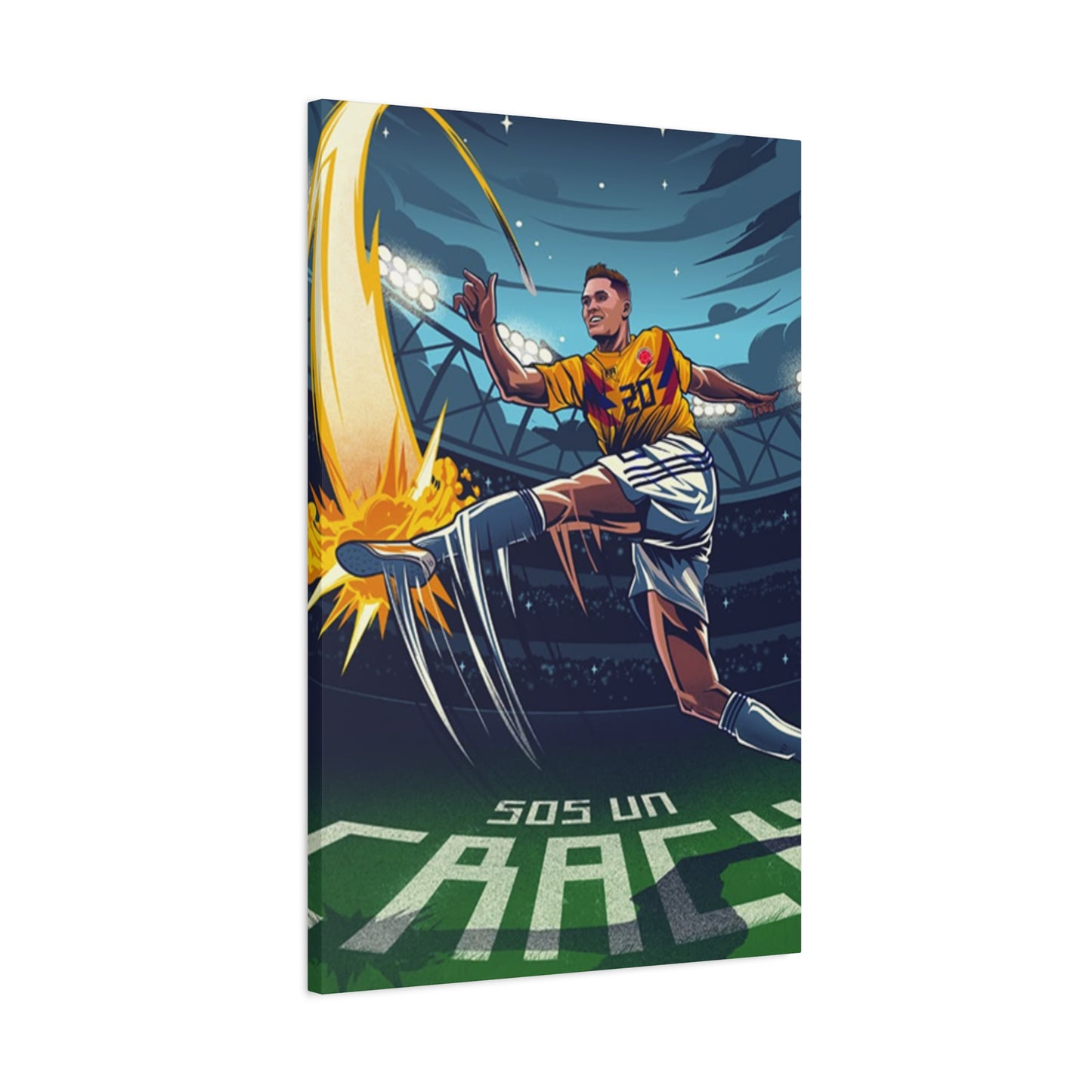Dynamic Football Animation Wall Art: Where Sport Meets Creative Expression
Dynamic football animation art represents a groundbreaking fusion of athletic passion and artistic innovation, creating visual masterpieces that capture the essence of the world's most beloved sport. This revolutionary art form transcends traditional static imagery by incorporating movement, energy, and emotion into every brushstroke, digital pixel, and canvas creation. The beauty of dynamic football animation art lies in its ability to freeze pivotal moments while simultaneously conveying the continuous flow of the game, making viewers feel as though they are witnessing live action from the comfort of their own homes.
The evolution of dynamic football animation art has been remarkable, progressing from simple sketches and paintings to sophisticated digital creations that utilize cutting-edge technology to bring players to life. Artists specializing in this field employ various techniques including motion capture, frame-by-frame animation, and advanced digital rendering to create pieces that seem to pulse with the heartbeat of the stadium. These artworks often feature players in mid-kick, goalkeepers diving through the air, and crowds erupting in celebration, all rendered with such precision and dynamism that they appear to move even when completely still.
What makes dynamic football animation art particularly compelling is its ability to connect with viewers on multiple levels. Football enthusiasts can appreciate the technical accuracy of player positions, the authentic recreation of iconic moments, and the faithful representation of team colors and uniforms. Art lovers, meanwhile, are drawn to the sophisticated use of color, composition, and movement that creates visually stunning pieces worthy of any gallery. This dual appeal has made dynamic football animation art increasingly popular among collectors, fans, and interior designers seeking to add energy and personality to residential and commercial spaces.
The creative process behind dynamic football animation art involves extensive research, planning, and execution. Artists must understand not only the technical aspects of football but also the emotional and cultural significance of the sport. They study player movements, analyze game footage, and often attend live matches to capture the authentic atmosphere and energy that makes football so captivating. This dedication to authenticity ensures that each piece of dynamic football animation art resonates with viewers, evoking memories of their own experiences with the sport while introducing them to new perspectives on familiar scenes.
Modern dynamic football animation art encompasses a wide range of styles and approaches, from photorealistic digital paintings that capture every detail of a player's expression to abstract interpretations that focus on the pure energy and movement of the game. Some artists prefer to work with traditional mediums like oils and acrylics, layering paint to create texture and depth that suggests motion, while others embrace digital tools that allow for unlimited experimentation with color, lighting, and special effects. Regardless of the medium chosen, the goal remains the same: to create art that celebrates the beauty, excitement, and universal appeal of football.
The impact of dynamic football animation art extends beyond mere decoration, serving as a powerful medium for storytelling and cultural expression. These artworks often commemorate significant moments in football history, celebrate legendary players, or capture the unique atmosphere of famous stadiums around the world. They can transport viewers to memorable matches, inspire young players to pursue their dreams, or simply provide a daily reminder of the joy and passion that football brings to millions of people worldwide. In this way, dynamic football animation art becomes more than just visual decoration; it becomes a celebration of the sport itself and its profound impact on global culture.
Motion on Canvas: Football Style Artistic Innovation
Motion on canvas football style represents a sophisticated artistic approach that challenges traditional notions of static art by incorporating visual elements that suggest movement, speed, and athletic grace. This innovative style has emerged as artists seek new ways to capture the kinetic energy of football, using brushstrokes, color gradients, and compositional techniques that create the illusion of motion even within the confines of a stationary canvas. The result is artwork that seems to vibrate with life, drawing viewers into the action and making them feel as though they are experiencing the game firsthand.
The technical aspects of creating motion on canvas football style art require a deep understanding of both artistic principles and the physics of athletic movement. Artists must master techniques such as motion blur, where certain elements of the composition are intentionally blurred to suggest speed and movement. They also employ directional brushstrokes that follow the trajectory of a ball in flight or the arc of a player's kick, creating visual paths that guide the viewer's eye across the canvas and reinforce the sense of motion. Color gradients and contrast are used strategically to enhance these effects, with bright highlights suggesting the peak of action and darker shadows indicating the areas from which movement originates.
One of the most challenging aspects of motion on canvas football style art is achieving the perfect balance between clarity and movement. Artists must ensure that key elements of the composition remain recognizable and impactful while simultaneously conveying the dynamic nature of the sport. This often requires multiple iterations and careful consideration of which elements should be sharp and which should be blurred or stylized to suggest motion. The most successful pieces in this style manage to tell a complete story about a specific moment in time while also suggesting what happened before and what might happen next.
The emotional impact of motion on canvas football style art cannot be overstated. These pieces have the unique ability to evoke the physical sensations associated with playing or watching football, from the adrenaline rush of a last-minute goal to the graceful beauty of a perfectly executed pass. Viewers often report feeling a sense of movement when looking at these artworks, as if they are being drawn into the action depicted on the canvas. This psychological response is precisely what artists in this field strive to achieve, creating pieces that transcend mere visual representation to become immersive experiences.
The versatility of motion on canvas football style art makes it suitable for a wide range of applications and settings. In residential spaces, these pieces can serve as focal points that energize rooms and reflect the homeowner's passion for the sport. Commercial establishments, particularly sports bars, fitness centers, and corporate offices, often use this type of art to create an atmosphere of energy and determination. Educational institutions, from elementary schools to universities, have found that motion on canvas football style art can inspire students and create a sense of school spirit and athletic pride.
Contemporary artists working in the motion on canvas football style genre continue to push boundaries and explore new possibilities. Some incorporate mixed media elements, adding texture and three-dimensional components that enhance the sense of movement and depth. Others experiment with unconventional color palettes, using bold, unexpected combinations to create emotional impact and visual interest. Digital artists have begun creating pieces that combine traditional painting techniques with modern technology, producing works that can be displayed on screens and actually incorporate subtle movement and animation.
The cultural significance of motion on canvas football style art extends beyond its aesthetic appeal, serving as a bridge between different communities and generations. These artworks often feature players from diverse backgrounds, celebrating the global nature of football and its ability to unite people across cultural boundaries. Young artists are increasingly drawn to this style as a way to express their love for the sport while developing their technical skills, leading to a new generation of creators who are redefining what sports art can be and how it can impact viewers.
Animated Goals in Wall Art: Celebrating Football's Greatest Moments
Animated goals in wall art represent one of the most exciting and emotionally resonant categories of sports-themed artistic expression, capturing the pure joy, triumph, and spectacular athleticism that define football's most memorable moments. These dynamic artworks go beyond simple documentation of scoring events, transforming them into powerful visual narratives that celebrate not only the technical skill required to score goals but also the human emotions and cultural significance surrounding these pivotal moments in the beautiful game.
The artistic challenge of creating animated goals in wall art lies in compressing the complexity of a goal-scoring sequence into a single, cohesive visual composition while maintaining the energy and excitement of the original moment. Artists must consider multiple elements simultaneously: the positioning and posture of the goal scorer, the reaction of teammates and opponents, the movement of the ball through space, the goalkeeper's desperate attempt to make a save, and the emotional explosion of the crowd in the background. Each of these elements must be rendered in a way that contributes to the overall sense of motion and celebration while remaining individually recognizable and impactful.
The emotional resonance of animated goals in wall art stems from the universal nature of the goal-scoring experience in football culture. Whether depicting a last-minute winner in a crucial match, a spectacular bicycle kick, or a perfectly placed free kick, these artworks tap into memories and emotions that transcend individual team loyalties and cultural boundaries. Viewers often find themselves reliving their own experiences of witnessing great goals, whether in person, on television, or while playing the sport themselves. This emotional connection transforms the artwork from mere decoration into a personal and meaningful addition to any space.
Technical innovation in animated goals wall art has advanced significantly with the integration of digital art tools and animation techniques. Modern artists can create pieces that incorporate subtle movement elements, such as gently swaying flags, floating confetti, or the slight tremor of goal nets after a powerful shot. Some installations even include sound elements, triggered by motion sensors, that play the roar of crowds or the distinctive sound of a ball hitting the back of the net. These multi-sensory approaches create immersive experiences that bring viewers closer to the action and intensify the emotional impact of the artwork.
The variety of styles and approaches within animated goals wall art ensures that there are options suitable for every taste and setting. Some artists prefer photorealistic approaches that capture every detail of a specific goal, from the texture of the grass to the expressions on players' faces. Others embrace more stylized or abstract interpretations, using bold colors and simplified forms to convey the essential energy and emotion of the moment. Pop art influences have led to bright, graphic representations that emphasize the celebratory aspect of goals, while impressionistic approaches focus on capturing the movement and atmosphere rather than precise details.
Commercial applications of animated goals wall art have expanded dramatically as businesses recognize the power of these pieces to create atmosphere and connect with customers. Sports bars and restaurants use large-scale goal celebration murals to create focal points that encourage customers to linger and engage with the space. Corporate offices, particularly those in sports-related industries, commission custom goal animation art that reflects their company culture and values. Retail stores selling sports merchandise have found that animated goals wall art can inspire purchases and create an authentic sporting atmosphere that resonates with customers.
The creation process for animated goals wall art often involves extensive research and collaboration with football historians, former players, and fans to ensure accuracy and authenticity. Artists study video footage, photographs, and eyewitness accounts of famous goals to capture not only the visual elements but also the cultural and historical context that makes these moments significant. Some artists even travel to stadiums where famous goals were scored, seeking to understand the unique atmosphere and energy of these sacred sporting venues. This dedication to authenticity ensures that the finished artworks resonate with football fans and accurately represent the moments they celebrate.
Educational value represents another important dimension of animated goals wall art, particularly in settings where young people are exposed to these pieces. These artworks can serve as starting points for discussions about perseverance, teamwork, and the pursuit of excellence. They can inspire young athletes to work harder in their own pursuit of sporting success while also introducing them to the rich history and culture of football. Many schools and youth organizations have incorporated animated goals wall art into their facilities specifically for these inspirational and educational benefits.
Kinetic Football Prints for Fans: Personalized Sports Memorabilia
Kinetic football prints for fans represent a revolutionary approach to sports memorabilia that goes far beyond traditional posters and photographs, offering supporters a way to bring the dynamic energy of their favorite sport directly into their personal spaces. These innovative artworks combine cutting-edge printing technology with artistic vision to create pieces that seem to pulse with the life and movement of live football action, providing fans with an immersive visual experience that celebrates their passion for the beautiful game.
The appeal of kinetic football prints lies in their ability to make fans feel more connected to the sport they love, bridging the gap between the excitement of match day and the everyday environment of home or office. Unlike static images that capture a single moment in time, kinetic football prints use sophisticated layering techniques, special inks, and innovative printing methods to create the illusion of ongoing movement and activity. When viewed from different angles or under varying lighting conditions, these prints reveal different aspects of the action, ensuring that they remain engaging and dynamic even after extended viewing.
The technology behind kinetic football prints has evolved rapidly, incorporating advances in digital printing, specialty inks, and substrate materials to achieve increasingly sophisticated effects. Some prints utilize lenticular technology, which creates different images when viewed from various angles, allowing artists to show multiple phases of a single play or different perspectives of the same moment. Others employ thermochromic inks that change color in response to temperature variations, creating prints that literally warm up with the excitement of the viewer. Glow-in-the-dark elements add another dimension, ensuring that the artwork remains visible and impactful even in low-light conditions.
Customization options for kinetic football prints have expanded dramatically, allowing fans to create truly personalized pieces that reflect their individual connections to the sport. Many artists and printing companies now offer services that can incorporate personal photographs, favorite players, specific match moments, or even custom team colors into kinetic prints. Fans can commission pieces that celebrate their own playing careers, commemorate significant games they attended, or honor local teams and leagues that hold special meaning in their lives. This level of personalization transforms kinetic football prints from generic sports art into meaningful family heirlooms and personal statements.
The psychological impact of kinetic football prints on fans should not be underestimated, as these pieces often serve as daily sources of inspiration and motivation. For young players, having dynamic football art in their bedrooms or study spaces can provide constant reminders of their goals and aspirations. Adult fans often find that kinetic football prints help them maintain their connection to the sport even during busy periods when they cannot attend matches or play themselves. The subtle movement and energy of these prints can provide a mental break from daily stress while reinforcing positive associations with teamwork, achievement, and athletic excellence.
Quality considerations for kinetic football prints are crucial, as the specialized techniques and materials required to create these pieces demand expertise and precision. The best kinetic football prints are created using archival-quality inks and substrates that will maintain their color and movement effects for decades. UV-resistant coatings protect the prints from fading when displayed in bright environments, while moisture-resistant materials ensure durability in various climate conditions. Professional framing and mounting are often essential to properly display these pieces and protect the specialized printing techniques that create their kinetic effects.
The collectibility of kinetic football prints has created a new segment within the sports memorabilia market, with limited edition pieces and works by renowned artists commanding significant prices among serious collectors. Some prints commemorate specific historical moments, such as World Cup finals or legendary player achievements, making them not only artistic pieces but also historical documents. The combination of artistic merit, technological innovation, and sports significance has led many collectors to view kinetic football prints as sound investments that will appreciate in value over time.
Display considerations for kinetic football prints require careful planning to maximize their visual impact and ensure optimal viewing conditions. The positioning of lighting sources can dramatically affect how the kinetic elements appear, with some prints designed specifically for natural daylight while others perform better under artificial illumination. The viewing distance and angle also influence the effectiveness of the kinetic effects, requiring careful consideration of room layout and furniture placement. Many fans choose to create dedicated display areas or gallery walls specifically designed to showcase their kinetic football print collections.
The social aspect of kinetic football prints cannot be overlooked, as these pieces often become conversation starters and focal points for gatherings of fellow fans. The dynamic nature of the prints naturally draws attention and invites closer examination, making them excellent icebreakers at parties and social events. Many fans report that their kinetic football prints have led to new friendships and connections with other supporters, creating communities of appreciation that extend beyond the artwork itself. This social dimension adds another layer of value to these pieces, transforming them from simple decorations into catalysts for human connection and shared passion.
Capturing Action: Football Animation Techniques and Artistry
Capturing action in football animation requires a sophisticated understanding of both the technical aspects of athletic movement and the artistic principles that make static images appear to be in motion. This specialized field of sports art has evolved dramatically with advances in technology and artistic technique, enabling artists to create increasingly realistic and emotionally resonant depictions of football's most dynamic moments. The challenge lies not only in accurately representing the physical mechanics of football actions but also in conveying the emotional intensity and cultural significance that make these moments meaningful to viewers.
The foundation of effective action capture in football animation begins with comprehensive analysis of athletic movement patterns, requiring artists to study the biomechanics of football players in various game situations. Professional football animation artists often work with sports scientists, coaches, and former players to understand the subtle details of how bodies move during different phases of play. This scientific approach ensures that animated football art maintains credibility and authenticity, crucial factors in creating pieces that resonate with knowledgeable fans and players who can immediately recognize inaccurate or unrealistic movement representations.
Traditional animation techniques remain highly relevant in capturing football action, with many artists preferring hand-drawn approaches that allow for maximum creative control and artistic expression. Frame-by-frame animation, though time-intensive, enables artists to capture the subtle nuances of player movement that might be lost in more automated approaches. The traditional animator's understanding of timing, spacing, and the principles of squash and stretch proves invaluable when depicting the explosive power of a striker's shot or the graceful arc of a long pass. These classical techniques, when applied to football action, create a timeless quality that appeals to viewers across different generations and cultural backgrounds.
Digital animation tools have revolutionized the field of football action capture, providing artists with unprecedented control over every aspect of their creations. Advanced software packages offer sophisticated motion blur effects, particle systems for elements like grass and dust, and realistic lighting models that enhance the three-dimensional quality of animated football scenes. Digital artists can layer multiple elements seamlessly, combining realistic player movements with stylized backgrounds or adding dynamic camera movements that follow the action in ways impossible with traditional media. The flexibility of digital tools also allows for easy revisions and experimentation with different artistic approaches.
The importance of reference material in capturing authentic football action cannot be overstated, with successful animation artists maintaining extensive libraries of video footage, photographs, and motion studies. High-speed cameras have provided new insights into the mechanics of football movements, revealing details invisible to the naked eye that can be incorporated into animations for greater realism. Some artists use motion capture technology to record actual player movements, creating digital skeletons that serve as the foundation for animated characters. This technology-assisted approach ensures biomechanical accuracy while still allowing for artistic interpretation and stylization.
Emotional storytelling represents a crucial aspect of capturing action in football animation, as the most successful pieces go beyond mere technical accuracy to convey the drama and passion inherent in the sport. Artists must consider not only what is happening physically in their animated scenes but also why these moments matter to players and fans. The anticipation before a penalty kick, the split-second decision-making of a midfielder threading a pass through traffic, or the explosive celebration following a crucial goal all require different approaches to timing, composition, and visual emphasis to effectively communicate their emotional significance.
The role of color and lighting in football action animation cannot be underestimated, as these elements dramatically influence the mood and energy of the final piece. Dynamic lighting that follows the action can enhance the sense of movement and drama, while strategic use of color can direct the viewer's attention and reinforce the emotional content of the scene. Many football animation artists develop signature color palettes that become part of their artistic identity, using specific combinations to evoke different types of football experiences, from the bright intensity of summer tournament football to the atmospheric conditions of winter matches.
Sound design and music integration have become increasingly important elements in football action animation, with many artists creating multimedia pieces that combine visual animation with carefully selected audio elements. The rhythmic sounds of football boots on grass, the distinctive whistle of a ball through the air, or the roar of stadium crowds can enhance the immersive quality of animated football art. Some artists collaborate with musicians to create original soundtracks that complement their visual animations, resulting in complete sensory experiences that engage viewers on multiple levels.
The technical challenges of rendering grass, weather conditions, and stadium environments in football animation require specialized skills and techniques. Creating convincing grass that responds to player movement, weather effects that influence the trajectory of the ball, and stadium atmospheres that feel authentic all demand different approaches and expertise. Many football animation artists specialize in specific aspects of these environmental challenges, developing techniques and workflows that can be applied across multiple projects while maintaining consistency and quality.
Animated Player Movements in Art: Bringing Athletes to Life
Animated player movements in art represent one of the most technically demanding and artistically rewarding aspects of sports-themed artistic expression, requiring creators to master both the physical mechanics of athletic performance and the visual principles that make static images appear to be in continuous motion. This specialized field has attracted artists from various backgrounds, including traditional painters, digital artists, and former athletes who bring unique perspectives to the challenge of capturing the grace, power, and precision of football players in action.
The study of human biomechanics forms the foundation for accurate animated player movements in art, with successful artists investing considerable time in understanding how the human body functions during various football-specific actions. The complex coordination required for activities such as dribbling, shooting, heading, and tackling involves multiple muscle groups working in precise sequence, creating movement patterns that must be carefully analyzed and understood before they can be effectively represented in art. Many artists collaborate with sports scientists and physical therapists to gain deeper insights into the mechanical aspects of player movements, ensuring that their artistic interpretations maintain credibility and authenticity.
The emotional dimension of animated player movements extends far beyond mere physical accuracy, encompassing the psychological and cultural aspects that make football such a compelling spectacle. A successful piece of animated player movement art captures not only what the body is doing but also what the athlete is feeling and thinking during that moment. The determined concentration of a penalty taker, the explosive joy of a goal scorer, or the desperate intensity of a defender making a crucial tackle all require different artistic approaches to effectively convey the human drama underlying the physical action.
Traditional artistic media continue to play important roles in creating animated player movements, with many artists preferring oil paints, watercolors, or charcoal for their ability to create organic, flowing representations of motion. These classical media allow for subtle gradations of tone and color that can suggest movement through techniques such as motion blur, multiple exposure effects, and directional brushwork. The tactile quality of traditional media often results in artwork that feels more intimate and personal than digital alternatives, creating emotional connections between viewers and the depicted athletes.
Digital technology has expanded the possibilities for animated player movements in art exponentially, providing tools that were unimaginable to previous generations of sports artists. Advanced software packages allow artists to create complex layered compositions that can show multiple phases of a single movement simultaneously, or to experiment with time-lapse effects that compress extended playing sequences into single images. The precision and flexibility of digital tools enable artists to achieve effects that would be impossible with traditional media while still maintaining the artistic vision and emotional impact that make great sports art memorable.
The challenge of depicting speed and acceleration in animated player movements requires sophisticated understanding of visual perception and artistic composition. Fast-moving players must be rendered in ways that clearly communicate their velocity while maintaining recognizability and visual clarity. Techniques such as motion lines, strategic blurring, and compositional elements that suggest the direction and intensity of movement all contribute to creating convincing representations of high-speed athletic action. The most successful animated player movement art achieves a balance between abstract representation of speed and realistic depiction of human anatomy and form.
Individual player characteristics and playing styles present unique challenges and opportunities for artists specializing in animated movements. Each player has distinctive movement patterns, preferred techniques, and physical characteristics that skilled artists can capture and emphasize in their work. The graceful dribbling style of one player might require different artistic treatment than the powerful shooting technique of another, leading artists to develop specialized approaches for different types of football actions and player types. This attention to individual variation adds depth and authenticity to animated player movement art.
The cultural and historical context of animated player movements adds layers of meaning that extend beyond simple documentation of athletic ability. Legendary players and iconic moments in football history provide rich source material for artists seeking to create pieces that resonate with multiple generations of fans. The artistic challenge lies in capturing not only the physical aspects of these historical movements but also their significance within the broader narrative of football culture and sporting achievement. These historically informed pieces often become valuable cultural artifacts in their own right.
Technical innovation continues to push the boundaries of what is possible in animated player movements art, with emerging technologies such as virtual reality and augmented reality opening new possibilities for immersive sports art experiences. Some artists are experimenting with installations that allow viewers to step into the artwork and experience player movements from multiple perspectives, creating unprecedented levels of engagement with the athletic content. These technological advances suggest exciting possibilities for the future development of animated player movements as an artistic medium.
The educational applications of animated player movements art have gained recognition in coaching and player development contexts, where visual representations of proper technique can supplement traditional instruction methods. Artistic depictions of ideal movement patterns can help players visualize and internalize correct techniques, while coaches can use animated movement art to illustrate tactical concepts and positioning principles. This practical application of artistic skill demonstrates the value of accurate, well-crafted animated player movements beyond their aesthetic and entertainment value.
Football in Motion: Canvas Ideas and Creative Concepts
Football in motion canvas ideas represent a dynamic and evolving field of artistic expression that challenges creators to develop innovative approaches for capturing the kinetic energy of the world's most popular sport on static surfaces. The conceptual framework for these pieces must balance the technical demands of accurately representing athletic movement with the artistic vision necessary to create compelling and emotionally resonant artwork that speaks to both football enthusiasts and art lovers alike.
The development of compelling football in motion canvas concepts begins with careful consideration of which specific moments or aspects of the game will most effectively translate to the canvas medium. Artists must evaluate potential subjects not only for their visual appeal but also for their ability to convey the essential energy and emotion of football through static representation. Classic concepts include the dramatic arc of a bicycle kick, the intense concentration of a free kick sequence, or the explosive celebration of a crucial goal, each requiring different artistic approaches to effectively capture their unique characteristics and emotional impact.
Compositional strategies for football in motion canvas art require sophisticated understanding of how the human eye processes movement and motion within two-dimensional images. Successful pieces often employ diagonal lines and dynamic angles that create visual tension and suggest ongoing action, while strategic placement of players and objects within the frame can guide the viewer's attention along predetermined paths that reinforce the sense of movement. The rule of thirds and other classical compositional principles remain relevant but must be adapted and sometimes subverted to achieve the dynamic effects necessary for convincing motion representation.
Color theory plays a crucial role in developing effective football in motion canvas concepts, with artists utilizing various color strategies to enhance the perception of movement and energy. Warm colors such as reds and oranges can suggest heat and intensity associated with athletic exertion, while cool blues and greens might be used to represent the calm precision of a perfectly placed pass. Contrasting color combinations can create visual vibration effects that enhance the sense of motion, while graduated color transitions can suggest the path of moving objects through space and time.
The integration of multiple temporal moments within single canvas compositions presents unique creative opportunities for football in motion art. Some artists choose to show different phases of a single action simultaneously, creating pieces that compress entire play sequences into unified visual statements. Others might combine elements from different moments in a match to create idealized or symbolic representations of football action that transcend literal documentation. These temporal manipulation techniques allow artists to create pieces that function as both artistic statements and narrative devices.
Texture and brushwork techniques contribute significantly to the effectiveness of football in motion canvas art, with different approaches serving various artistic and conceptual purposes. Smooth, controlled brushwork might be appropriate for representing the precise movements of skilled players, while rough, energetic application could better capture the chaos and intensity of competitive situations. Some artists deliberately vary their brushwork within single pieces, using smooth techniques for background elements and more dynamic approaches for areas of peak action and movement.
Mixed media approaches to football in motion canvas art have gained popularity as artists seek to push beyond traditional painting limitations to create more immersive and impactful pieces. The incorporation of collage elements, such as actual grass, sand, or fabric from football uniforms, can add tactile dimensions that enhance the overall impact of the artwork. Some artists integrate photographic elements with painted sections, creating hybrid pieces that combine the accuracy of photography with the expressive freedom of painting.
Environmental and atmospheric considerations provide additional layers of complexity and interest in football in motion canvas concepts. Weather conditions such as rain, snow, or intense sunlight not only affect the visual appearance of football matches but also influence how players move and interact with their environment. Artists can use these atmospheric elements to enhance the dramatic impact of their pieces while also demonstrating their technical skill in representing various natural phenomena and their effects on both players and playing surfaces.
The scale and format of football in motion canvas pieces significantly impact their visual effectiveness and emotional resonance. Large-scale works can create immersive experiences that surround viewers with the energy of the depicted action, while smaller, more intimate pieces might focus on specific details or moments of personal significance. The choice between landscape, portrait, or square formats affects how movement can be depicted and how viewers interact with the finished artwork.
Conceptual approaches to football in motion canvas art continue to evolve as artists explore new ways to represent and interpret the sport through visual media. Some creators focus on the abstract qualities of movement and energy, creating pieces that capture the essence of football action without necessarily depicting recognizable players or specific situations. Others might explore the cultural and social dimensions of the sport, using football in motion as a metaphor for broader human experiences such as struggle, achievement, or community cooperation. These conceptual frameworks add intellectual depth to football in motion canvas art while maintaining its visual and emotional appeal.
Sport Meets Art: Animated Football Fusion
Sport meets art in animated football fusion represents a revolutionary convergence of athletic passion and creative expression that has produced some of the most innovative and emotionally powerful artworks of the contemporary era. This fusion transcends traditional boundaries between sports documentation and fine art, creating hybrid forms that satisfy both the sports enthusiast's desire for authentic representation and the art lover's appreciation for technical skill and creative vision. The resulting works demonstrate that sports and art are not separate domains but rather complementary aspects of human expression that can enhance and enrich each other.
The philosophical foundations of sport meets art animated football fusion rest on the recognition that both athletics and artistic creation involve similar fundamental human drives toward excellence, expression, and transcendence. Football players and artists both strive to push beyond conventional limitations, seeking moments of beauty and perfection that elevate the human spirit. When these parallel pursuits are combined in animated football fusion art, the result is work that speaks to universal human experiences while celebrating the specific cultural and emotional significance of football as a global phenomenon.
Technical mastery becomes even more crucial in sport meets art animated football fusion, as artists must excel in both sports knowledge and artistic skill to create credible and compelling work. The fusion approach demands not only accurate representation of football action but also sophisticated artistic treatment that adds layers of meaning and visual interest beyond simple documentation. Artists working in this field often spend years developing expertise in both domains, studying football tactics and player techniques while simultaneously refining their artistic abilities across multiple media and styles.
The collaborative aspects of sport meets art animated football fusion have led to exciting partnerships between artists and athletes, coaches, and sports organizations. These collaborations bring together different types of expertise and perspective, resulting in artworks that might not have been possible through individual efforts alone. Former players contribute their understanding of the physical and mental aspects of the game, while artists provide the technical skills and creative vision necessary to translate these experiences into compelling visual forms. The dialogue between these different perspectives often leads to innovative approaches and unexpected insights.
Cultural representation within sport meets art animated football fusion has become increasingly important as artists recognize the global nature of football and its significance across different communities and traditions. Successful fusion works often incorporate elements that reflect the diverse cultural contexts in which football is played and celebrated, from the colorful supporter culture of South American football to the tactical sophistication of European leagues. This cultural awareness adds depth and authenticity to the artwork while making it more accessible and meaningful to international audiences.
The educational potential of sport meets art animated football fusion extends beyond simple entertainment or decoration, offering valuable opportunities for learning about both athletic and artistic principles. These works can serve as teaching tools in physical education programs, helping students understand movement principles and tactical concepts through visual representation. Art educators can use sport meets art fusion pieces to demonstrate various artistic techniques and concepts while engaging students who might not otherwise be interested in traditional art subjects.
Technology integration in sport meets art animated football fusion continues to expand possibilities for artistic expression and viewer engagement. Virtual reality applications allow viewers to experience animated football art from immersive perspectives, while augmented reality tools can overlay animated elements onto real-world football environments. Interactive installations respond to viewer movement or input, creating personalized experiences that blur the boundaries between observation and participation. These technological enhancements represent the cutting edge of sport meets art fusion development.
The commercial applications of sport meets art animated football fusion have created new opportunities for artists and new product categories for consumers. Sports organizations commission fusion artworks for marketing campaigns and venue decoration, while collectors seek out pieces that combine their love of football with their appreciation for fine art. The unique appeal of fusion works has also led to licensing opportunities for merchandise, publications, and digital content that can reach broader audiences than traditional sports or art markets alone.
Community building through sport meets art animated football fusion has emerged as an unexpected but valuable outcome of this artistic movement. Artists, athletes, and fans often form networks around shared appreciation for fusion works, creating communities that transcend traditional sports and art boundaries. These communities provide support for emerging artists, platforms for sharing new works, and opportunities for collaboration on larger projects that might not be feasible for individual creators.
The future development of sport meets art animated football fusion appears limitless as new technologies, artistic techniques, and cultural perspectives continue to emerge. Artificial intelligence and machine learning tools may soon enable automated analysis of football action that can inform artistic creation, while advances in materials science could lead to new forms of interactive and responsive artworks. The growing global popularity of football ensures a continued audience for fusion works, while the increasing recognition of sports as legitimate subjects for fine art suggests broader acceptance and support for this innovative artistic movement.
Goal Celebrations on Wall Art: Capturing Triumphant Moments
Goal celebrations on wall art represent one of the most emotionally charged and universally appealing categories of sports-themed artistic expression, capturing the pure joy, relief, and triumph that define football's most memorable moments. These artworks go beyond simple documentation of athletic achievement to explore the deeply human emotions that make goal celebrations so compelling to viewers, regardless of their specific team loyalties or level of football knowledge. The artistic challenge lies in translating the explosive energy and spontaneous emotion of goal celebrations into static visual forms that can convey the same emotional impact years or even decades after the original moment.
The psychology of goal celebrations provides rich source material for wall art, as these moments represent the culmination of preparation, strategy, and athletic skill in ways that resonate with human experiences beyond sports. The relief of a striker who has ended a goal drought, the ecstasy of a player scoring in a crucial match, or the choreographed celebration that demonstrates team unity all offer different emotional and visual possibilities for artistic interpretation. Artists specializing in goal celebration wall art must understand these psychological dimensions to create pieces that connect with viewers on deeper levels than simple visual representation.
The diversity of celebration styles across different players, teams, and cultural contexts provides endless inspiration for goal celebration wall art. From the restrained professionalism of some players to the exuberant displays of others, each celebration style requires different artistic approaches to effectively capture its unique character and meaning. Cultural celebrations that incorporate traditional dances, religious expressions, or symbolic gestures add layers of meaning that can make wall art pieces more significant to specific communities while also educating viewers about the global diversity within football culture.
Technical considerations for goal celebration wall art include the challenge of depicting multiple figures in dynamic poses while maintaining compositional clarity and visual impact. Unlike individual player portraits, celebration scenes often involve entire teams, coaching staff, and even spectators, requiring artists to manage complex compositions with numerous focal points and competing visual elements. The successful goal celebration wall art piece must balance the chaos and spontaneity of the moment with artistic structure and visual hierarchy that guides viewers through the composition effectively.
Conclusion
Dynamic Football Animation Wall Art represents the perfect fusion of athletic energy and artistic creativity, transforming ordinary walls into vibrant celebrations of sport and motion. These artworks capture the excitement, intensity, and skill of football through dynamic compositions, vivid colors, and expressive forms that bring every movement to life. More than just decorative pieces, they convey the passion and rhythm of the game, allowing viewers to feel the thrill of the pitch and the artistry inherent in every play. By translating athletic performance into visual storytelling, this wall art bridges the worlds of sports and fine art, appealing to both sports enthusiasts and art lovers alike.
Integrating football animation wall art into interior spaces adds an energetic and contemporary touch. In living rooms, sports lounges, or home offices, these pieces serve as striking focal points, sparking conversation and inspiring motivation. In recreation areas or gyms, they reinforce themes of movement, teamwork, and perseverance, energizing the space while enhancing its visual appeal. The versatility of dynamic football art allows it to complement modern, industrial, or even eclectic interior styles, making it a versatile choice for diverse design schemes.
The artistry behind football animation wall art is meticulous, with attention given to composition, color, and form to create a sense of motion and depth. Artists employ techniques that emphasize the fluidity of the players’ movements, the tension of the game, and the excitement of competition. Every detail—from the curve of a kick to the anticipation in a player’s stance—is crafted to capture the essence of football in a visually striking manner. This level of creativity elevates the artwork from mere decoration to an inspiring visual narrative, celebrating the dedication, skill, and spirit of athletes.
In essence, Dynamic Football Animation Wall Art transforms interiors into immersive spaces that celebrate both sport and creativity. It inspires energy, passion, and admiration while adding a modern, artistic flair to any room. By incorporating these pieces, individuals can showcase their love for football, highlight personal style, and create spaces that motivate, energize, and captivate viewers. This art form is not only a visual statement but a tribute to the artistry and excitement of the beautiful game.









